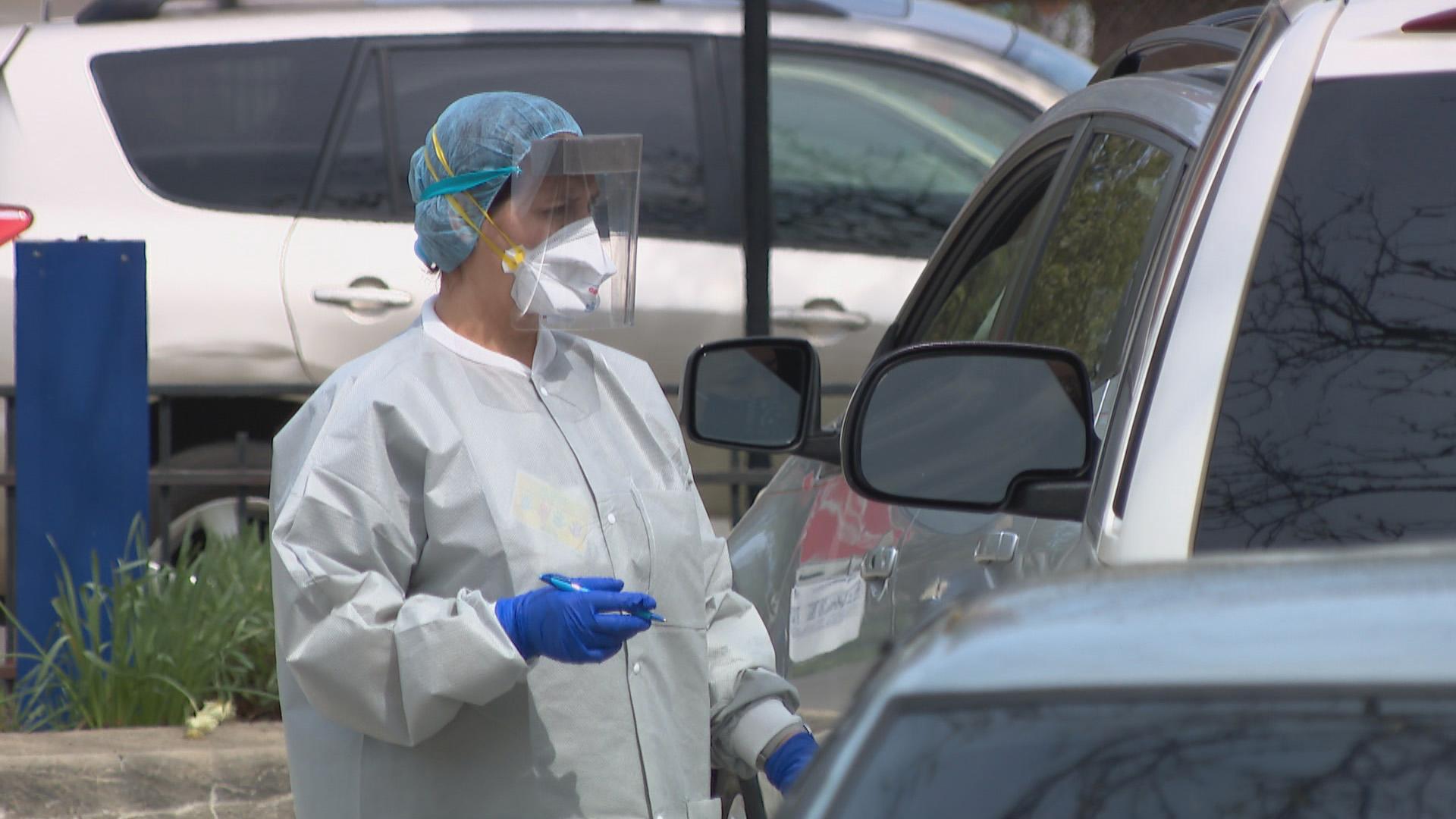 (WTTW News)
(WTTW News)
Most of Illinois is experiencing low levels of community transmission of COVID-19, but with case rates slowly rising, state health officials are sharing tips for how residents can prevent infection based on the level of community spread.
“It’s really important that everyone in Illinois knows what to do whether (community transmission) is low, medium or high,” said Dr. Amaal Tokars, acting director of the Illinois Department of Public Health, in a Tuesday afternoon press briefing.
Low community level transmission is defined as fewer than 10 new COVID-19 hospital admissions per 100,000 population and less than 10% of hospital beds occupied by COVID-19 patients based on a seven-day average, according to the Centers for Disease Control and Prevention.
State health officials advise residents living in communities with low levels of community spread to stay up to date with COVID-19 vaccinations and boosters, and for people who have yet to be vaccinated to get the jab.
Residents living in communities with medium levels of transmission, defined as 10-19.9 new COVID-19 admissions per 100,000 population and 10-14.9% of hospital beds occupied by COVID-19 patients based on a seven-day average, should take additional precautions on top of staying up to date with vaccinations and boosters.
“At medium community levels, we start to get more concerned about elders and persons who are immunocompromised or others with significant comorbidities,” Tokars said. “The CDC says these people should wear a face covering again in indoor places – not only them but (their) household members, too.”
State health officials also recommend people take a self-test before spending time with people who are at high risk for severe disease and to wear mask when indoors with such individuals.
Currently, four southern Illinois counties – Gallatin, Saline, Pope and Hardin – are experiencing high levels of transmission, defined as more than 20 new COVID-19 admissions per 100,000 and 15% or more of hospital beds occupied by COVID-19 patients based on a seven-day average.
Once a community reaches the high level, “the CDC is strongly recommending – as we will also strongly recommend – that all of us wear a face covering for that time in indoor public places,” said Tokars.
People who are immunocompromised or at high risk for severe disease should wear a mask or respirator that provides greater protection, such as an N95 or KN95 mask, and should avoid non-essential indoor activities in public where they could be exposed to COVID-19.
While Illinois is “starting to see a steady increase in cases,” officials are not currently considering reinstating the mask mandate as Philadelphia plans to do to head off a rise in cases there, according to Tokars. “We are not discussing a mandate at this time, but we don’t know what the future will be,” she said. “However, I would never say that nothing is possible. We are going to do what is wisest and best.”
Anyone who is experiencing symptoms, receives a positive COVID-19 test or has been exposed to someone with COVID-19 should wear a mask regardless of the level community spread, according to state health officials.
On Tuesday, officials also announced they were adopting new federal guidelines for reporting COVID-19 data at the community level based on CDC guidelines which emphasize case rate and hospitalizations to better track the prevalence of the virus in communities.
Last month, the CDC announced it will be relying on the total number of new COVID-19 cases per 100,000 population in the past seven days, new COVID-19 admissions per 100,000 in the past seven days, and the percent of staffed inpatient beds occupied by COVID-19 patients.
State health officials will no longer report test and case positivity rates on its COVID-19 dashboard because testing providers will no longer be required to report some negative tests. In addition, at-home tests aren’t always reported to public health officials. Since IDPH will no longer have the total number of tests reported, test and case positivity rates can’t be calculated, according to Dr. Arti Barnes, medical director of IDPH.
“We can still follow trends over time. Test positivity and case rates followed each other closely, and we can use case rate in place of test positivity to see what’s happening with the pandemic,” Barnes said.
IDPH plans to provide more detailed data on COVID-19 hospitalizations, including information about vaccination status on its website later this year.
“We want to bring some focus back on breakthrough infections and hospitalizations and what that means, including people’s risks for hospitalization based on vaccination status,” Barnes said.
Contact Kristen Thometz: @kristenthometz | (773) 509-5452 | [email protected]








